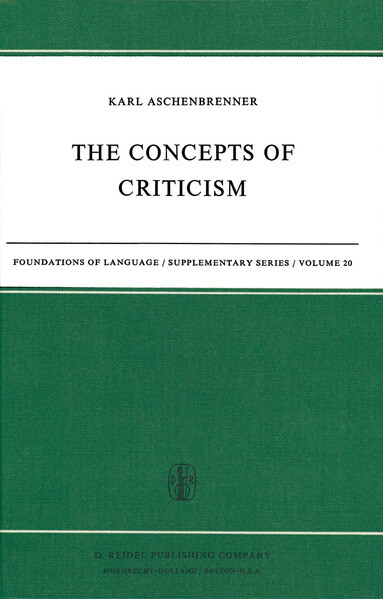Tbis inquiry may be thought of as a sequel to The Concepts of Value and as an extension of the brief core-vocabulary of aesthetic concepts found in one of the appendices to it. In terms of sheer numbers, most of the value concepts of our language are to be found in the area of human relations and of the aesthetic. There are also other value vocabularies, shorter but equally important, for example, the cognitive and logical. These and other objects of pbilosopbical study (for example, the question of "other minds") deserve the kind of empirical survey that has been made of moral and aesthetic notions, if only to test a priori approaches to them. In the present studyan even more determined empirical approach than that adopted for the first has been found necessary. Once the moral or human value vocabulary has been identified, sentential contexts for the use of the terms readily come to mind. In a study of the language of criticism, however, the vocabulary has first to be sought in the utterances of critics themselves and quoted in sufficient context to make their critical intentions clear. The outcome is that the present study is of great length, about half of it being quotations from critics. The rule adopted for arriving at tbis length go on collecting quotations as long as new types of appraisal came was to to light.
Inhaltsverzeichnis
1. Criticism and the Concepts of Appraisal. - 2. Critical Non-Appraisive Discourse. - 3. Sources of the Appraisive Vocabulary. - 4. Characterization and Commendation. - 5. Linguistic and Appraisive Communities. - 6. The Nature of Characterization. - 7. Characterization and Characterisms. - 8. Critics and Criticism. - Preliminary: Critical Exclusions. - 0. 0 Paracritical and Noncritical Discourse. - I/The Characterization of the Artist. - Part I. - 1. 0 Creative Powers. - 2. 0 Creative Response. - Conclusion Part I. - II/The Characterization of Art. - Part II. - 3. 0 Order. - 4. 0 Elemental Quality. - 5. 0 Presentation. - 6. 0 Essential Characterization. - 7. 0 Style and Totality. - 8. 0 Contextual Characterization and Generalization. - III/Commendation. - Part III. - 9. 0 General and Ultimate Appraisal. - Critical Source Book. - Preliminary/Critical Exclusions. - I/The Characterization of the Artist. - II/The Characterization of Art. - III/Commendation.
